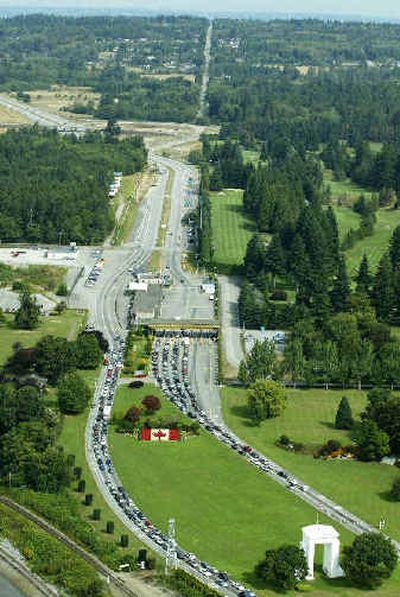New base targets Canadian border

BELLINGHAM – As part of a dramatic boost in surveillance of the Canadian border, federal customs and immigration officials on Friday dedicated the first of five planned bases for regular flights to look for drug runners and others crossing illegally.
The Bellingham Air Marine Branch is scheduled to throw 69 people, two helicopters, a new airplane and a high-speed boat into the border enforcement effort. Although similar bases have policed the Mexican border for three decades, the new facility is the first on the Canadian border.
Previously, customs and immigration service aircraft have patrolled the border only sporadically, even though much of the border is in rugged and largely empty country that presents little challenge to a determined smuggler.
“If they can get drugs through, they can get terrorists through,” Darrell Feller, a pilot for U.S. Immigration and Customs Enforcement, part of the Department of Homeland Security, said during a helicopter tour of the border near Blaine.
The new bases, which will dot the border from Washington state to upstate New York, are a response to the Sept. 11, 2001, attacks as well as ongoing smuggling of illegal aliens and drugs, including British Columbia’s potent strains of marijuana.
“Smuggling is a two-way street,” agency spokesman Michael Milne said. “We’ve got cocaine and money going north, B.C. Bud and human smuggling coming south.”
A second station in Plattsburgh, N.Y., is scheduled by the end of the year, Milne said, followed by bases near Detroit; Grand Forks, N.D.; and Great Falls.
The Bellingham base won’t initially have enough money to operate 24 hours a day, but will be able to fly patrols about eight hours each day.
“Our greatest asset right now is they don’t know when we’re going to be operating,” said Mitch Pribble, a pilot and associate field director for the office.
Many airfields in southern British Columbia are within 10 minutes of the border, Feller said.
“In the middle of the night, it doesn’t take very long to get down to the U.S., drop something off and get back,” Feller said.
The new aircraft will allow agents to track suspicious flights where the pilot doesn’t report to customs or talk on the radio. Federal pilots will follow such aircraft or direct agents on the ground.
The new people and equipment will also help the day-to-day work of the Border Patrol, although they won’t be under the agency’s direct control, said Joe Giuliano, the patrol’s assistant chief in Blaine.
“It can only help us,” Giuliano said. “We have tools now, but if you give us more, we can do more.”
U.S. Sen. Patty Murray said Congress earmarked $35.2 million in the current fiscal year to get the Bellingham station up and running.
“I feel like the northern border is finally getting its due,” said Murray, D-Wash.